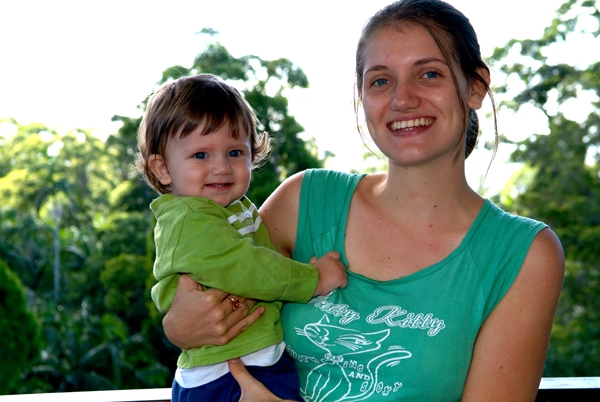Artwork by Candice Rogers
The duck in our Snuggly Duck logo came from one of Candice’s drawings that was inspired by a tea-coffee mug that had ducks on it. One day, as she was drinking her tea, she visualised the ducks escaping the confines of the cup, just as she wanted to escape the confines of her psychiatric medication treatments.

Candice was always gifted in her artwork. She was a quiet child, kept to herself and easily entertained herself with toys, crafts and artwork. Even as a three-year-old, she was able to draw amazing pictures. The kindergarten teacher said that she had never encountered a child before at that age that could draw with perspective, showing the smaller figures representing distance and being further away. Candice performed well academically in the arts such as English and also won the Art Award for her school year in grade 10, 11 and 12. She did however not flourish in mathematics or related subjects.

By the time Candice was in her early 20’s she had already painted hundreds of artworks that are a delight to behold. They had an uplifting, colourful and innocent charm. You could look at the pictures for hours on end and always see something new when you returned to them. She was focused and painted sometimes for 10 hours a day straight. Candice would say that she ‘saw’ more colours in another dimension that she was trying to replicate, but there just weren’t enough choice in paints to achieve the colours she could see ‘over there’ in her imagination. Nevertheless, she strived to bring those colour frequencies into her art. It was her escape from the maddening world outside. It was her soothing and calming antidote to stress.Candice was on her way, she thought, to becoming a professional artist. So why did she get trapped in the psychiatric system for more than ten years?
Candice had a baby boy in 2005 when she was 21. She called him Jasper and he was her idol. To her, he was the best masterpiece she had ever created, and enjoyed her motherhood as a full time mother for the first couple of years of his life. When her ex partner absconded with her boy to another town five hours drive away, it took a year to get the matter to court. By that time the judge decided that this town is now Jasper’s new home, and that it was up to Candice to visit them. But she couldn’t because she didn’t drive and she couldn’t take trains and buses, overnight at a motel for each visit, in a sustainable manner. She had lost her son and it crushed her immeasurably. She fell into deep depression and couldn’t proceed with any further legal actions to recover her son.The stress of the ordeal had consumed her so much that she had a panic attack ‘meltdown’ screaming fit. She was hospitalised and diagnosed with schizophrenia and given powerful antipsychotic drugs, from which she suffered terrible side effects. Years of hospitalisations followed, each time with the psychiatrist experimenting with different drugs in the tool box until they had used all of them. Each time Candice developed debilitating side effects after only a few months of the treatments. She was extremely sensitive to chemicals and had a low inefficient liver clearance rate of toxins. On top of all that we found out she also had a faulty gene inherited from her father called Leiden 5 Factor, which means she was heterozygous confirmed, and eight times more likely to develop thrombosis. And it is also well documented that most of those anti-psychotic drugs not only lead to development of diabetes and excessive weight gain, but also cause thrombolytic events. This put her in a very high risk category for adverse events.


Some years later, when Candice was 32 years old, she was diagnosed by the private clinic in Brisbane called Hearts and Minds with full blown Asperger Syndrome and developmental delay, but not schizophrenia. Professor Tony Attwood and Dr Michelle Garnett spent hours over a few sessions to come up with the diagnosis and said afterwards that Candice was a classic case, but had slipped through the radar to detect autism by the public hospital system because high functioning girls learn to mimic others like accomplished actresses, thereby blending in with the crowd. The other difficulty in diagnosis for the psychiatric industry is that some of the symptoms overlap, such as pervasive anxiety, different language patterns and forms of expression, and also sometimes paranoia due to fear of communication problems, bullying or possible hostile intentions of others. They have difficulty reading the body language or interpreting intentions of others in communications. This however leads to a lot more stress, because they bottle up intense emotions, fear and anxiety that eventually spill over into a breakdown if they don’t learn to recognise the escalation, and then just let it boil over into a meltdown they can’t control. If you have ever seen a two-year-old having a temper tantrum, that’s what a meltdown is like for an adult.
Professor Attwood said that Candice could learn some strategies via cognitive therapies to monitor her own anxiety and stress levels, and to create diversions away from the escalation. He said at most that some extra anxiety medication could help, but he said the powerful antipsychotic drugs she had been forced to take under repeated Involuntary Treatment orders were highly inappropriate for her.
Finally by 35 years of age Candice was learning more about observing herself and controlling the anxiety escalation. She had to take high quality nutritional supplements, as well as transdermal magnesium, to help control the akathisia, involuntary muscle movements and sleep problems caused by the medications which were injected into her each month (and she really hates needles). Some of these medications had actually caused hallucinations, which stopped when the medications were stopped. Candice would complain that no one was listening to her when she complained to the doctors about her symptoms with the new drugs, and was repeatedly told that it was just part of her schizophrenia symptoms, that is her ‘disease’. The psychiatrist even recently told her that they ‘want to change her brain’ – which terrified Candice. She said she likes her brain and doesn’t want it changed.

Candice was finally reaching developmental milestones of maturity that had been illusive earlier. The greatest challenge for Candice now at 36 is to be able to transition out of the addiction set up by these antipsychotics. They have so much blunted her focus, eyesight and caused her hand to tremble when she holds the paint brush, that she can’t produce the brilliant artwork she did in the past. This makes her feel very sad because it was her specialty – her space where she could shine brilliantly and feel good about herself. Candice says the medications don’t fix any problems, but only numb reactions so that it feels like a chemical straight jacket. She said she can’t feel the great joy she used to feel in the past when she was immersed in her artwork, or noticed the opening of a flower bud, or the beauty of the ocean waves as they glisten in the sun. She used to observe Nature and it made her feel blissful and joyous, but the drugs have numbed those feelings.
Thankfully Candice is now about to receive private medical care to help her body transition away from the medication addiction. She hopes to regain her artwork skills again and to move on to the career she has always dreamed of. A couple of years ago Candice was able to move to a small apartment in the same town that Jasper lives in, ever hopeful that one day she can reconnect with him. She keeps reaching out to Jasper and calls regularly, but the father restricts phone access. As Jasper is now 15 years old, Candice stays hopeful with a heart full of love for her son, that he will one day soon contact her and arrange a visit to go out to lunch, to watch a movie together, to walk on the beach… to have the mother-son relationship she has longed for for so long.
Snuggly Duck nappy prints are an entrepreneurial venture created by Candice’s younger half sister Michaela to celebrate Candice’s earlier artwork and to affirm their value to the world as a beautiful contribution to mental health, love and happiness!
Written by Sandy Sanderson
(Candice’s and Michaela’s mother)
